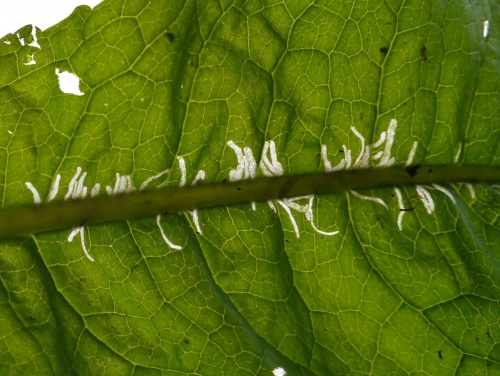Wild Teasel - Dipsacus fullonum
Tall plant to 2 metres, stems erect, prickly on the angles. Basal leaves in a large rosette, oblong-elliptical, untoothed, prickly, covered in pimples, and withering early in the second season. Stem leaves linear lanceolate, the pairs fused together round the stem at their bases to form a water catching cup, midrib spiny beneath. Flowers purple sometimes pinkish-purple, in large spiny oblong-cylindrical heads 3 to 8 cm long. Wild Teasel starts flowering in a band around the middle of the head, which then spreads upwards and downwards, with the middle petals falling out as the flowers progress up and down.
Various habitats, damp places, rough grassland.
July and August.
Biennial.
Common in central and southern England, north to the Humber and in south Wales, scarce elsewhere.
Frequent in Leicestershire and Rutland. In the 1979 Flora survey of Leicestershire it was found in 260 of the 617 tetrads.
Leicestershire & Rutland Map
Enter a town or village to see local records
MAP KEY:
Yellow squares = NBN records (all known data)
Coloured circles = NatureSpot records: 2020+ | 2015-2019 | pre-2015
UK Map
Species profile
- Common names
- Wild Teasel, Teasel
- Species group:
- Wildflowers
- Kingdom:
- Plantae
- Order:
- Dipsacales
- Family:
- Caprifoliaceae
- Records on NatureSpot:
- 388
- First record:
- 21/06/2001 (Jane McPhail;John Kramer)
- Last record:
- 17/04/2024 (Smith, Peter)
Total records by month
% of records within its species group
10km squares with records
The latest images and records displayed below include those awaiting verification checks so we cannot guarantee that every identification is correct. Once accepted, the record displays a green tick.
In the Latest Records section, click on the header to sort A-Z, and again to sort Z-A. Use the header boxes to filter the list.
Latest images
Latest records
Chromatomyia ramosa
The larvae of the fly Chromatomyia ramosa mine the leaves of Teasel and Scabious species. They feed along the midrib but make short, narrow corridors into the leaf.





























